未来
部門長インタビューvol.1 コンサルティング事業統括本部 金井事業統括本部長/Interview with Director General, Vol.1 Haruhiko Kanai, Director General, Consulting Operations Headquarters
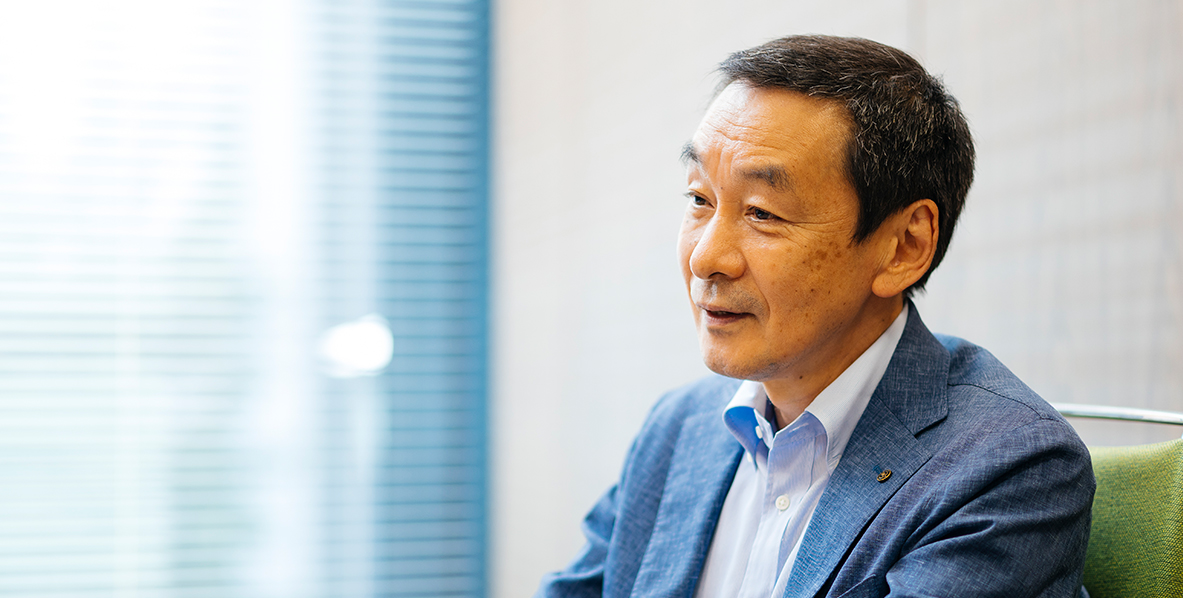
日本工営グループが100年企業を目指すために、各部門が長期的にどのように取り組んでいくか。部門長の皆さんにインタビューします。今回はコンサルティング事業統括本部 金井 晴彦 事業統括本部長にお話を聞きました。
―2020年7月の組織変更で、コンサルタントは国内部門と海外部門が統合しました。この1年を振り返っての感想をお願いします。
新型コロナパンデミックの影響で、2020年3月には海外に派遣されていた社員の多くが帰国を余儀なくされ、その後の渡航制限も含めて海外事業は大きな影響を受けました。国によって状況は違いますが、特にインドやバングラデシュは深刻でしたね。日本工営単体だけでなくグループ会社の運営にいまだに影響は続いています。
国内事業は、コロナ禍でも公共投資が堅調に推移していました。加えて海外から帰国した社員を国内業務に従事にしてもらうことで生産体制を強化することができ、業務効率化や出張費等の削減も併せて、2021年6月期は受注高・売上収益・営業利益とも過去最高を更新しました。
―組織変更によるメリットはありましたか?
組織変更による国内部門・海外部門の統合はコロナ禍で有効に働きました。統合によるメリットのひとつが、国内と海外の連携が促進されたことです。国内・海外ともにメリットは大きく、昨年度の業績においても数字に表れていると思います。

―統合によって仕事の仕方が変わったんですね。
これからは、ひとつの業務を国内部門と海外部門で分担したり、海外の部署に籍を置きながら一時的に国内の部署に移ったりと様々なパターンの働き方が可能になるでしょう。ひとつの組織になったことで手続き上のわずらわしさがなくなり、自由に動けるようになりました。若い世代の人は国内で技術力の基礎を身に着けてから海外にチャレンジしやすくなったと思います。中央研究所も技術本部からコンサルティング事業統括本部へ移ったことで、そこで開発された最先端技術をグローバルな事業に展開・実装することが容易になると期待されます。
私自身は海外部門の所属が長く、韓国、中国、インドネシアなどアジアを中心に渡り歩き、MYANMAR KOEI INTERNATIONALへの赴任を含め、通算20年ほどを海外で過ごしましたので、国内部門との交流はあまりありませんでした。互いの技術や情報を共有できる機会が少なく、もったいないことが多かったと感じています。今後は連携が加速することで、海外のグループ会社においても中央研究所のシミュレーション技術やBIM/CIMなど最先端の技術を使うことなども可能になるでしょう。技術共有や人財育成の仕組みとして始動するNKGグローバルアカデミーにも期待しています。
国内部門と海外部門では仕事の仕方がかなり異なるので、統合に当たっては多少不安な面もありました。しかし、結果的には良い方向に機能しました。私だけでなく多くの社員がいざとなればマインドセットを変えられるものなのだと、感じ入っています。
―国内部門と海外部門を統合する上で、難しさはありますか?
国内事業では調査・計画・設計までを担当することが多く業務が細分化されており、5000万円を超えれば大型案件と言われます。一方、海外事業では大規模な施工監理案件をマネジメントするような業務が多いことがその特徴として挙げられます。最近ではスーパープロジェクトも増えてきており、ダッカやカイロなどの鉄道案件、パキスタンのダム案件など、規模が巨大な案件も実施しており、海外事業の収益の大きな柱になっています。国内と海外では求められる役割も大きく異なっているので、これからは互いによく理解し合うことが必要です。
―各国への渡航が、早く再開できるといいですね。
今は渡航制限だけでなく隔離期間もあるので大変です。私もできるだけ現場へ行きたいのですが、前後の2週間ずつの隔離期間を考えるとなかなか難しい面もあります。Web会議で十分に対話ができるとはいえ、やはり直接見て話すことも必要ですから。
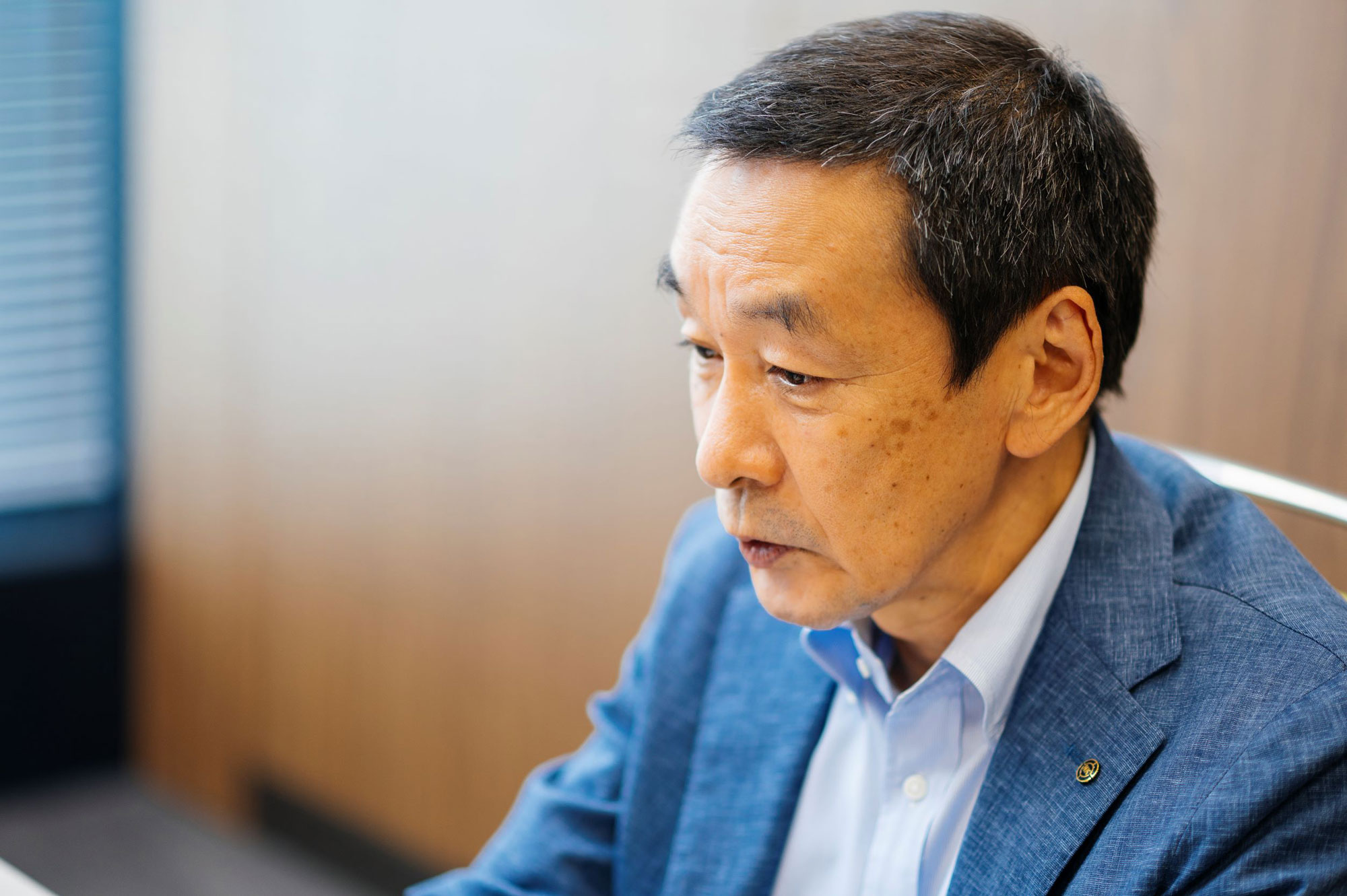
―長期経営戦略への見通しはいかがですか?
コンサルティング事業統括本部の到達目標は2030年に売上1400億円を達成することです。成長のエンジンは海外の現地法人やグループ会社と位置付けており、高い成長率を設定しています。競争環境も厳しくなるため、これを計画通り成長させることができるかが重要な課題となるでしょう。グループ全体のガバナンスも大きなテーマです。
長期経営戦略は2030年までの10年間ですが、足元の事業計画を毎年いかに達成するかが勝負でありミッションです。できれば前倒しで達成していきたいところですが、コロナや政変など不測の事態も発生します。グループ全体でコンサルティング事業が占める割合は大きく、期待も高いと感じています。期待されているからこそ、達成できるよう1年1年着実に進んでいきたいと思っています。
―新しいチャレンジもありますか?
マネジメント分野にも力を入れていきます。これまでも進めてきた海外の施工監理はもちろん、CM(コンストラクションマネジメント)・PM(プロジェクト・マネジメント)などのマネジメントに特化した業務、国内のPFI(Private Finance Initiative)や海外のPPP(Public Private Partnership)など事業の要素を持った新しい業態へのチャレンジなど、これまでとはまた違った柱になっていくと思います。
また、小水力発電やミニグリッドなど、事業運営までも含めた業務も増えていくと思います。中央研究所がコンサルティング事業統括本部へ統合されたことで、技術やソフトウェアのマネタイズの仕方も変わっていくでしょう。
―他の事業部との連携について教えてください
すべての案件にコンサルティング部門が絡めるわけではありませんが、たとえば離島に風力発電の設備を作るプロジェトならエネルギー部門と協業ができますし、案件の内容によってさまざまな可能性はありますね。
統合によって営業がワンストップになり、各部門も海外グループ会社の人たちもコンサルタントという枠から全社的な視野で物事を見るようになりました。これまでグループ会社の中には本社に依存するような側面もありましたが、今では互いをリスペクトして連携するようなマインドになってきています。
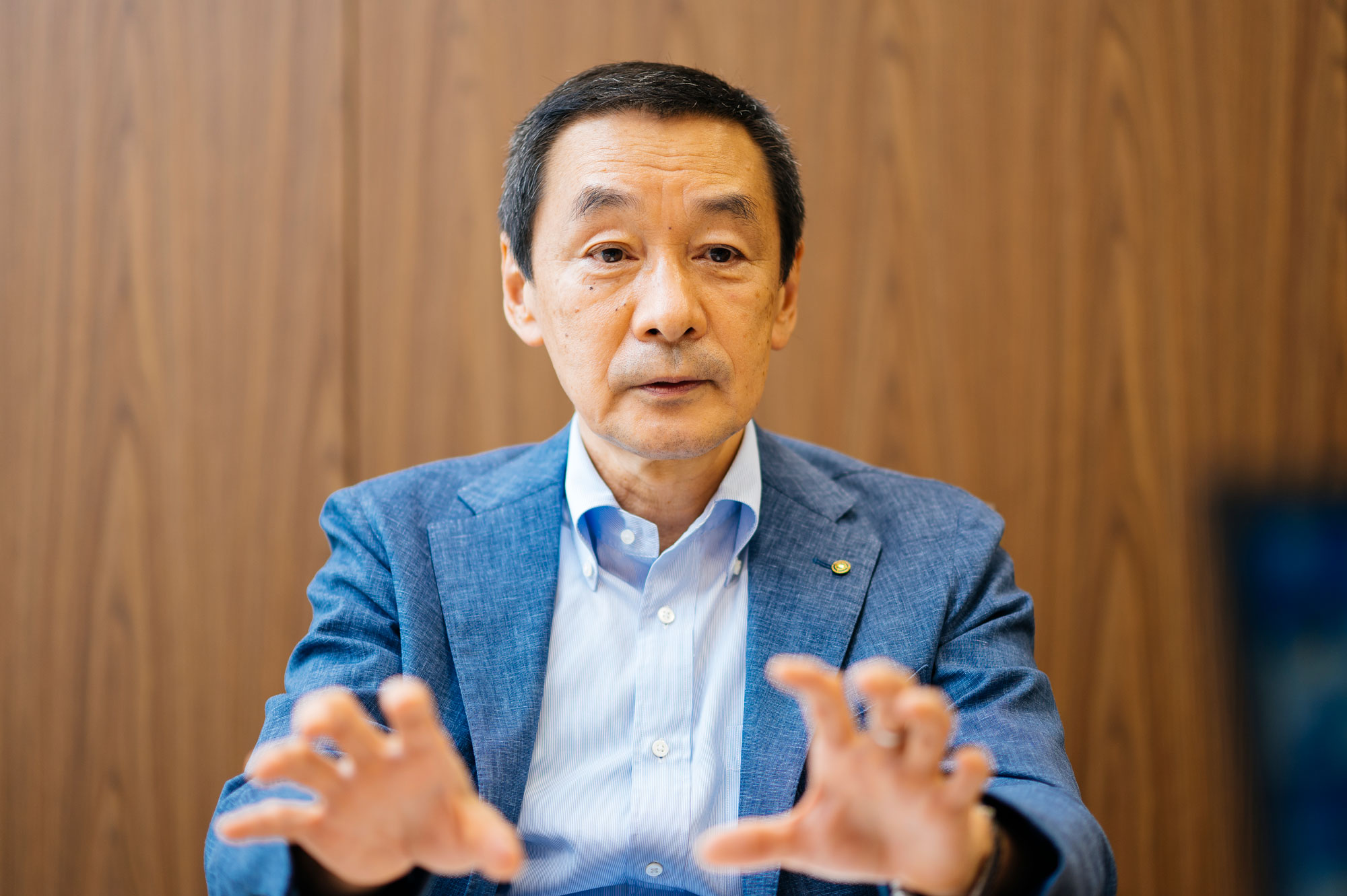
―人財育成についてのお考えをお聞かせください。
国内事業が安定成長してきた要因のひとつに、新入社員を数多く採用して国内エンジニアを育成してきたことがあると思います。そして今後は、国内・海外のどちらのフィールドでも活躍できるハイブリット人財を増やしていくことが、日本工営グループの成長に欠かせないと考えています。
私は面接の際にその人の志向を聞きますが、ほとんどの人は「国内でまず力をつけてから海外をやりたい」と答えます。たしかに40代や50代になってから国内から急に海外の仕事をするのは大変ですが、若いうちにどちらもできるハイブリット人財になることを目指してほしいです。もちろん、国内だけ、海外だけを志向する人も歓迎します。
海外現地法人で働きながらインターナショナルに活躍できるリージョナルエンジニアの方々の育成にも数年前から力を入れています。現地の方々のレベルは確実に上がって来ており、成果物の完成度の高さに感心させられることもあります。海外のグループ会社の人財に関しては、国内社員との格差をなるべくなくす方向で動いています。国際的に活躍ができる現地エンジニア・スタッフを育てることは、それぞれのキャリアアップとともに、グローバルな観点からNKGクオリティの確立につながると考えています。
国内・海外問わずグループ間の垣根を取り払って異動できるようにしたり、海外現地法人のスタッフが中央研究所で数か月間研修をしたりするなど、今後さらに相互の能力を活かせるようにしていきたいですね。
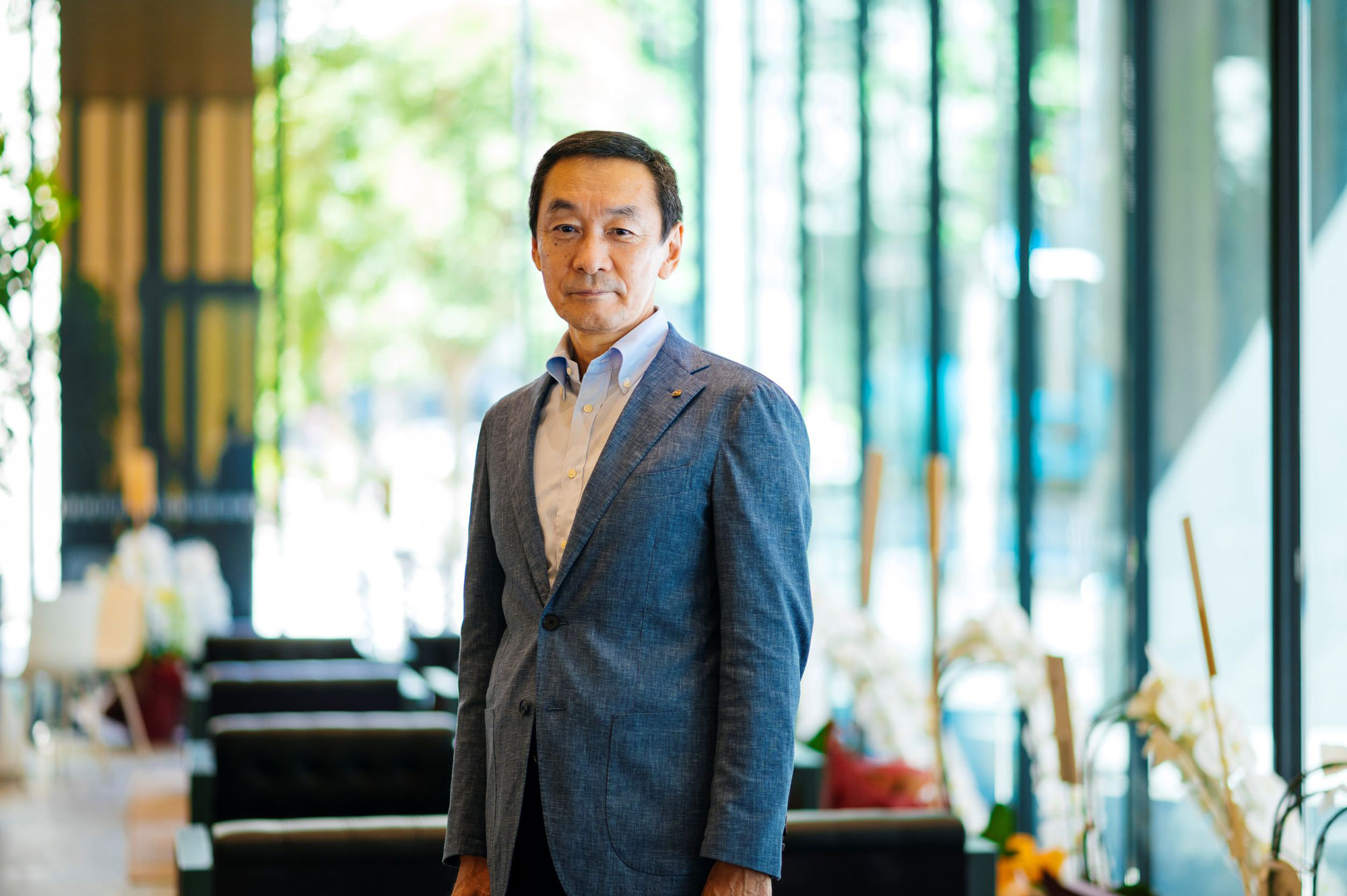
取材場所
日本工営ビル1階 エントランス
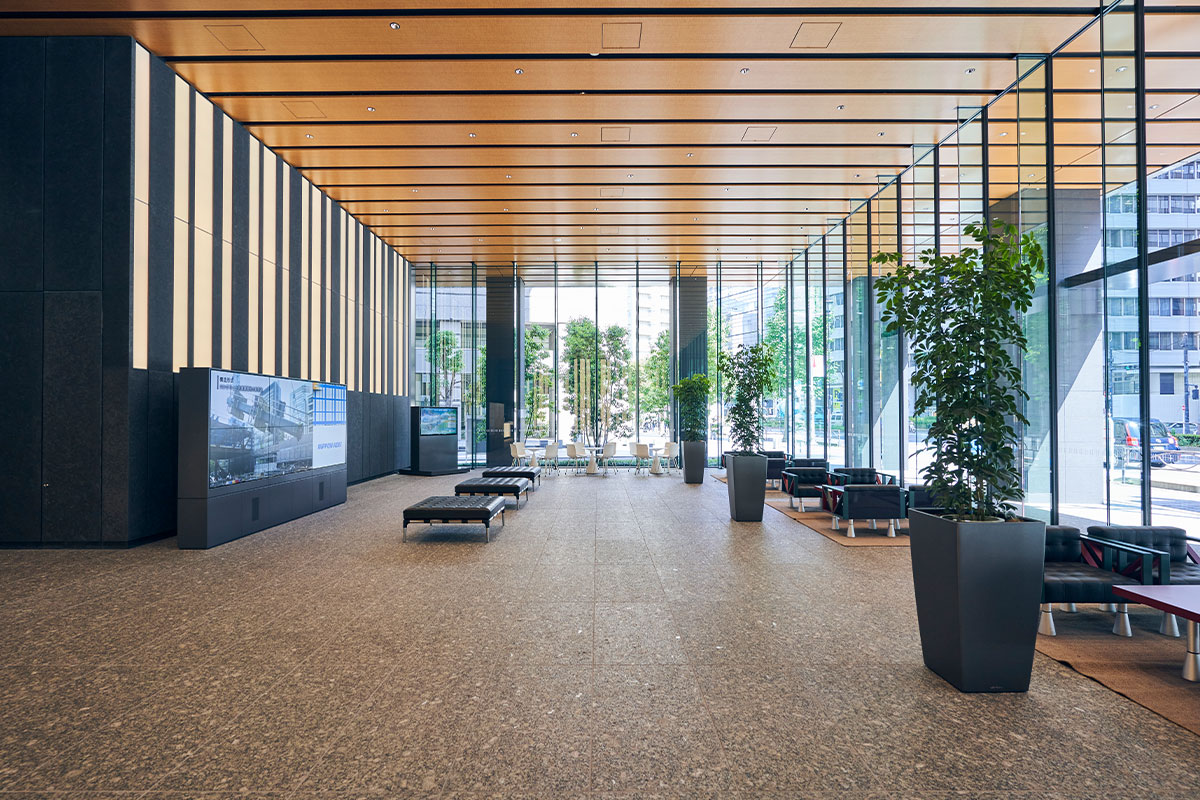
日本工営ビルの詳細はこちらから
https://75th.n-koei.co.jp/contents/unity/01/
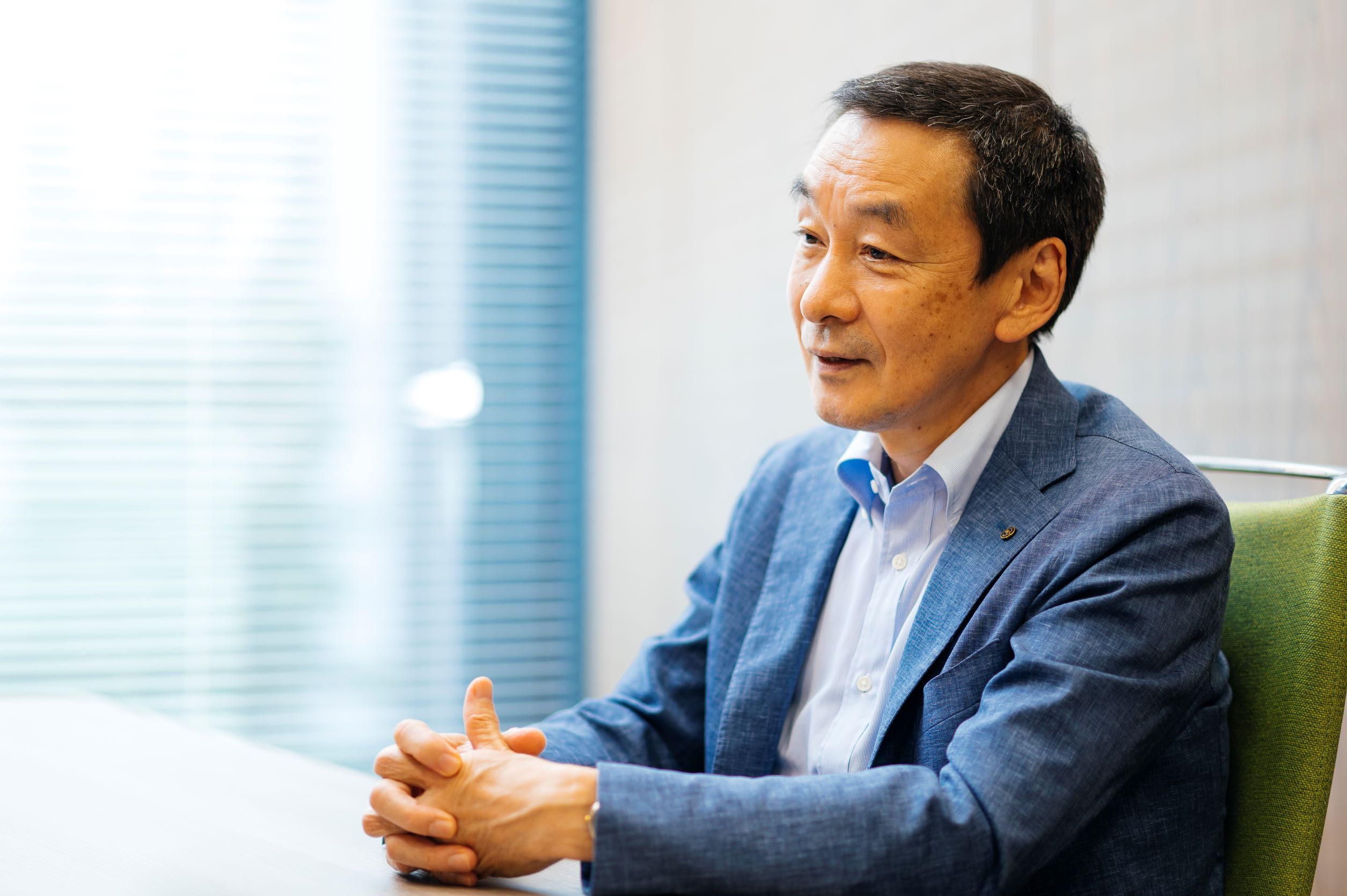
Interview with Director General, Vol.1
Haruhiko Kanai, Director General, Consulting Operations Headquarters
What will each division do in the long term to further Nippon Koei Group’s aim of becoming a 100-year company? To find out, we interview the Directors General. This time, we talked to Haruhiko Kanai, Director General of the Consulting Operations Headquarters.
With the reorganization in July 2020, the domestic and international sectors of the Consulting Operations Headquarters were integrated. Looking back on the past year, how do you think it has been going?
Due to the COVID-19 pandemic, most of our employees dispatched overseas had to return to Japan in March 2020 and since then, including the subsequent restrictions on travel, this has had a great impact on our international business. The situation has varied from country to country, but it has been particularly severe in India and Bangladesh. Not only Nippon Koei itself but also our Group companies are still feeling this impact.
In our domestic business, public investment has remained strong in spite of the COVID crisis. In addition, by having the staff who returned to Japan work on domestic projects, we were able to strengthen our production system and, together with the improvement of operational efficiency and reduction of business trip and other expenses, orders received, sales revenue, and operating income all reached record highs in the fiscal year ended June 30, 2021.
Have there been any benefits from the reorganization?
The integration of the domestic and international sectors through the reorganization has worked effectively during the COVID crisis. One of the benefits of integration is that it has promoted coordination between domestic and international business. The merits of this have been great for both and this was also reflected in our business results for the previous fiscal year.

So the way you work has changed as a result of the integration.
From now on, various working patterns will be possible, such as dividing tasks between the domestic and international sectors or having staff who are registered at an overseas division come and work for a while in a domestic division. Becoming a single organization has enabled us to eliminate procedural problems and move more freely. I think it has also become easier for younger generations to learn basic technical skills in Japan and then take up the challenge of working overseas. By moving the Research & Development Center and the Technology Headquarters to the Consulting Operations Headquarters, we expect it to become easier to deploy and implement globally the cutting-edge technologies developed in them.
I myself worked in the international sector for a long time, mainly in Asian countries such as Korea, China, and Indonesia. Including my time at Myanmar Koei International, I spent a total of about 20 years working overseas, so I have not had much interaction with the domestic sector. I feel we have had few chances to share technologies and information and that we wasted a lot of opportunities. From now on, with the acceleration of cooperation, Group companies overseas will be able to use leading-edge technologies such as the R&D Center’s simulation technology and BIM and CIM technology. I also have high hopes for the NKG Global Academy, which will be launched to promote information sharing and develop human resources.
Since ways of working in the domestic and international sectors are quite different, I had a few concerns about integration, but it has worked out well. I feel it has made it possible for me and many others of our staff to change our mindset when the need arises.
Are there difficulties in integrating the domestic and international sectors?
In domestic projects, the work is often fragmented, with people in charge of research, planning, and design, and if it costs more than 50 million yen, it’s classified as a large-scale project. A distinctive characteristic of overseas projects, on the other hand, is that much of the work involves managing the supervision of large-scale construction. With the increase in ultra-large-scale projects in recent years, we have implemented huge projects such as railroads in Dhaka and Cairo and a dam in Pakistan, and profits from overseas projects have become a major pillar of our overseas business revenue. Since the roles required in our domestic and international business differ greatly, mutual understanding will be essential going forward.
We can only hope that overseas travel will resume soon.
The problem is not just the restrictions on travel but also the quarantine period. I want to go to overseas sites as much as I can, but the quarantine period of two weeks before and after makes that very difficult. Even if we can have sufficient dialogue via Web conferencing, I think it’s still necessary to talk face to face.

What is the outlook for the long-term management strategy?
The long-term target of the Consulting Operations Headquarters is to achieve sales of 140 billion yen by 2030. Positioning our overseas subsidiaries and Group companies as the engine of growth, we have set a high growth rate target. Since the competitive environment will become more severe, whether we can achieve the planned growth will be an important challenge. Another major theme is governance of the entire Group.
The long-term management strategy covers the 10 years until 2030, but our challenge and mission is how to achieve the current business plan every year. If possible, we want to achieve it ahead of schedule, but unexpected situations such as the pandemic or political upheavals may arise. The Consulting Business accounts for a large part of the Group’s business, so I feel that expectations are high. In view of these high expectations, we want to proceed steadily every year so that we can achieve our targets.
Please tell us about your new challenges.
We are also making great efforts in the management field. In addition to the supervision of overseas construction projects we have been engaged in up to now, we will pursue business specializing in management such as construction management and project management, and new business models with elements such as domestic private finance initiatives and overseas public-private partnerships, and these will become new pillars of our business.
I think we will also see an increase in projects that include business operation, such as small-scale hydroelectric power generation and mini-grids. With the integration of the R&D Center into the Consulting Operations Headquarters, I expect that our ways of monetizing technologies and software will also change.
How will you cooperate with other business divisions?
The Consulting segment is not involved in every project of the company, but for a project to build a wind power generation facility on a remote island, for example, we can cooperate with the Energy segment and there are various possibilities depending on the nature of the project.
Through the integration we can realize one-stop sales and it enables the people in each segment and overseas Group companies to view things from a Group-wide perspective beyond the framework of consulting. Up to now, some Group companies have tended to depend on the head office, but now they are developing the mindset of cooperating with mutual respect.

What are your thoughts on human resources development?
I think one of the factors behind the steady growth of our domestic business has been the fact that we have hired many new staff and fostered domestic engineers. From now on, it will be essential for the growth of the NK Group to increase the number of hybrid human resources who can work in both the domestic and the international field.
We have also been making efforts for a few years now to train regional engineers who can be active in the international arena while working at overseas subsidiaries. The level of our overseas staff has been steadily improving and I am sometimes very impressed by the perfection of their deliverables. Regarding human resources at overseas Group companies, we are trying to reduce the disparity between them and our domestic staff as much as possible. Fostering local engineering staff who can work internationally not only improves their careers, but also leads to the establishment of NKG quality from a global perspective.
Going forward, we want to make it possible to further utilize each other’s capabilities by, for example, breaking down barriers between the domestic and international sectors in the Group so that staff can be transferred, or having staff of our overseas subsidiaries train for a few months at the R&D Center.

Location of interview
1st Floor Entrance, Nippon Koei Building

For details of the Nippon Koei Building, click the link below:
https://75th.n-koei.co.jp/contents/unity/01/